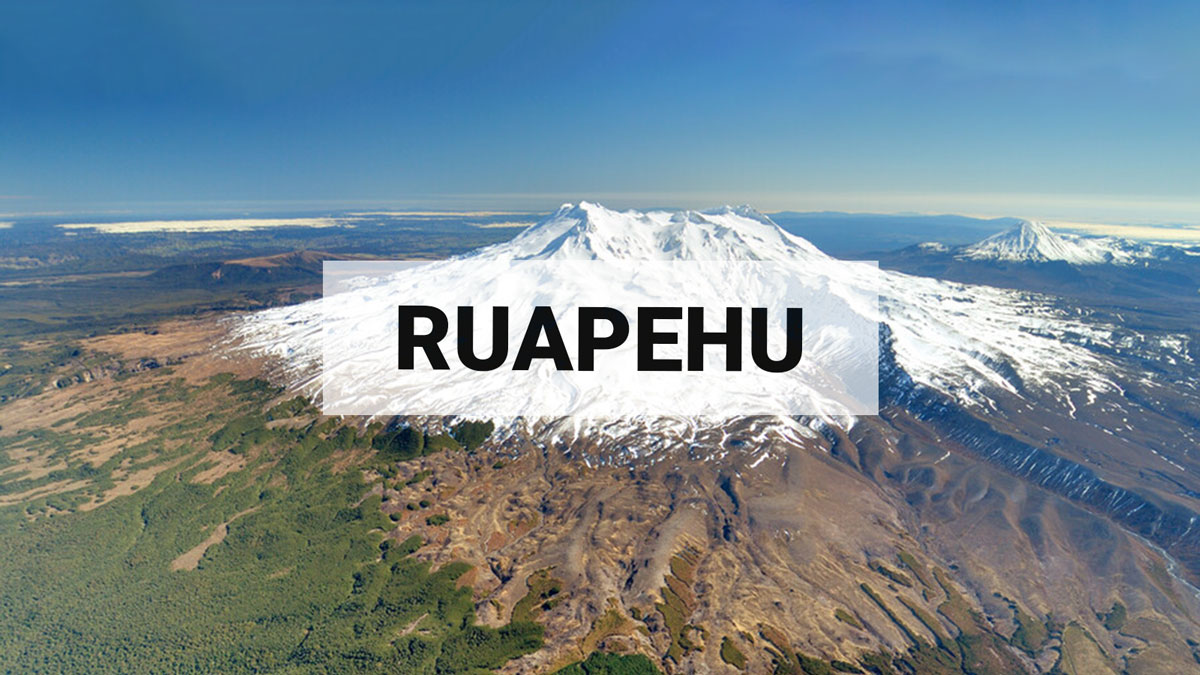
Mt Ruapehu elevated volcanic unrest continues. Volcanic Alert Level remains at Level 2.
Elevated levels of volcanic unrest continue at Mt Ruapehu primarily manifested as strong volcanic tremor, slowly rising Crater Lake (Te Wai ā-moe) temperatures and high gas outputs. These changes indicate magma may now be driving the unrest, increasing the chances of further activity. The Volcanic Alert Level remains at Level 2.
Over the past seven days, the elevated volcanic unrest has continued at Mt Ruapehu increasing to heightened levels. This heightened unrest is primarily manifested as volcanic tremor and increased gas output. The tremor levels remain elevated but have declined from the peak reached on 6-7 April 2022. An airborne gas flight completed yesterday has confirmed an increase in gas output through the Crater Lake, in particular of CO2 (Carbon Dioxide) gas, being the 2nd highest ever recorded value.
The Crater Lake (Te Wai ā-moe) temperature is now 38 °C. Our modelling suggests that about ~280 MW of heat is required to sustain this lake temperature. Temperature and heat input remain within the typical range for a heating cycle. The crater lake remains a battleship grey colour with upwellings at the northern vents area and a small overflow. Sulphur slicks are present on the lake surface.
The sustained nature of the volcanic unrest now differs from those typically seen during the start of a heating phase. The volcanic tremor signals and elevated gas output are now more indicative of processes being driven by molten rock (magma) interacting with the geothermal system at depth in the volcano.
The most likely outcome of this unrest episode is no eruptive activity occurs, as no eruptions have followed unrest in the past 15 years. However, there is also a possibility of a single or multiple eruption that could impact the summit area and generate lahars into some catchments draining off the volcano, especially the Whangaehu Valley. The size of these eruptions, if they did occur, would probably be like the September 2007 event.
The chances of a prolonged and larger eruption, such as occurred in 1995-96 with wider ashfall impacts, is possible, but remains very unlikely. Such an eruption would most likely only follow a sequence of smaller eruptions.
The interpretation of this activity is consistent with elevated volcanic unrest at the heightened level and therefore the Volcanic Alert Level remains at Level 2. The Aviation Colour Code remains at Yellow.
Mt Ruapehu is an active volcano and has the potential to erupt with little or no warning when in a state of elevated volcanic unrest.
The Volcanic Alert Level reflects the current level of elevated volcanic unrest. The Volcanic Alert Level should not be used to forecast future activity. However, at Volcanic Alert Level 2, eruptions are usually more likely than at Volcanic Alert Level 1.
Volcanic Alert Level 2 indicates the primary hazards are those expected during volcanic unrest; steam discharge, volcanic gas, earthquakes, landslides and hydrothermal activity. While Volcano Alert Level 2 is mostly associated with volcanic unrest hazards, eruptions can still occur with little or no warning.
For information on access to the Mt Ruapehu area, please visit the Department of Conservation’s websites on volcanic risk in Tongariro National Park and follow their Facebook page for further updates. For information about responding to volcanic activity there are guidelines from the National Emergency Management Agency.
GNS Science and its National Geohazards Monitoring Centre continue to closely monitor Mt Ruapehu for further changes.
Brad Scott
Duty Volcanologist
Media Contact: 021 574 541 or media@gns.cri.nz